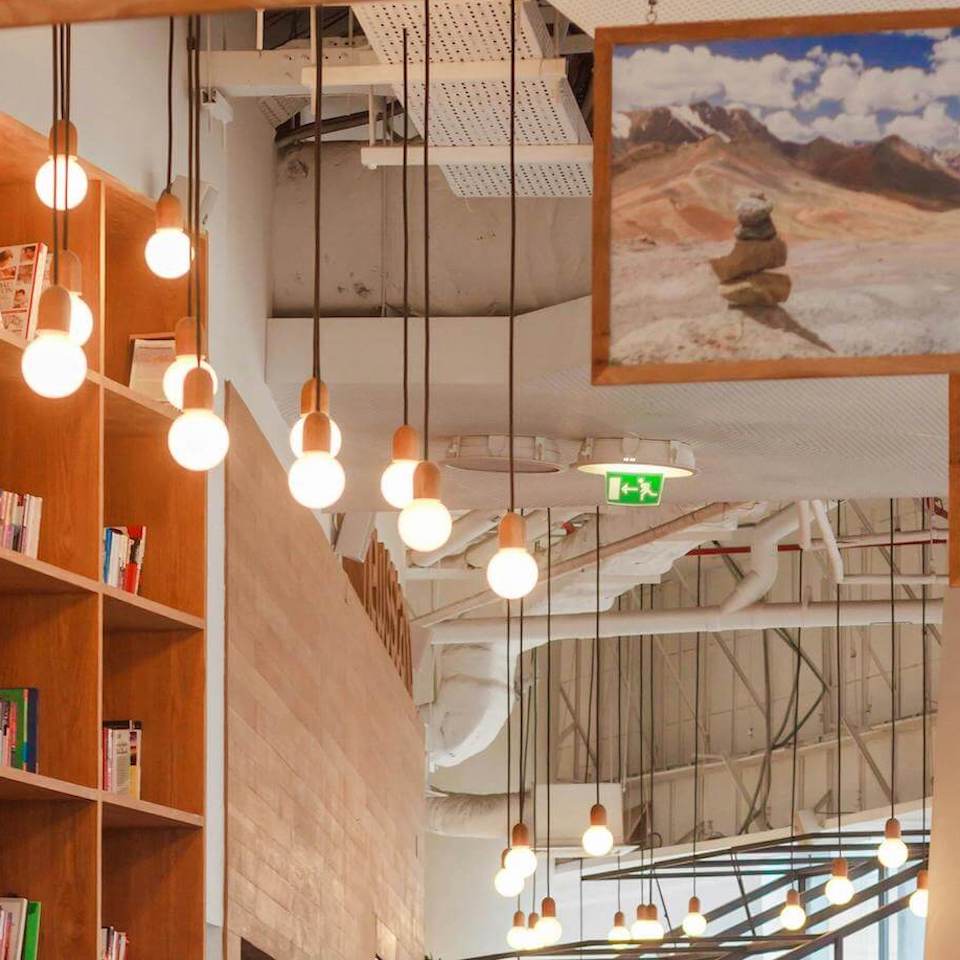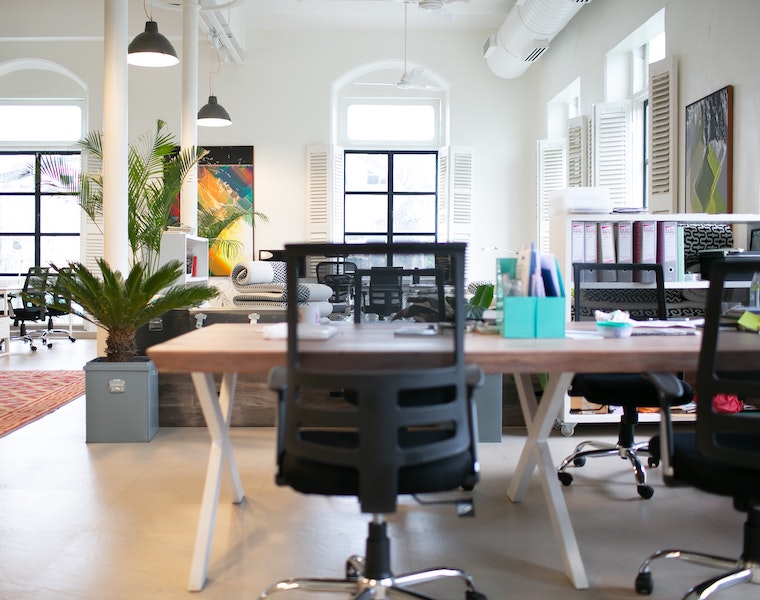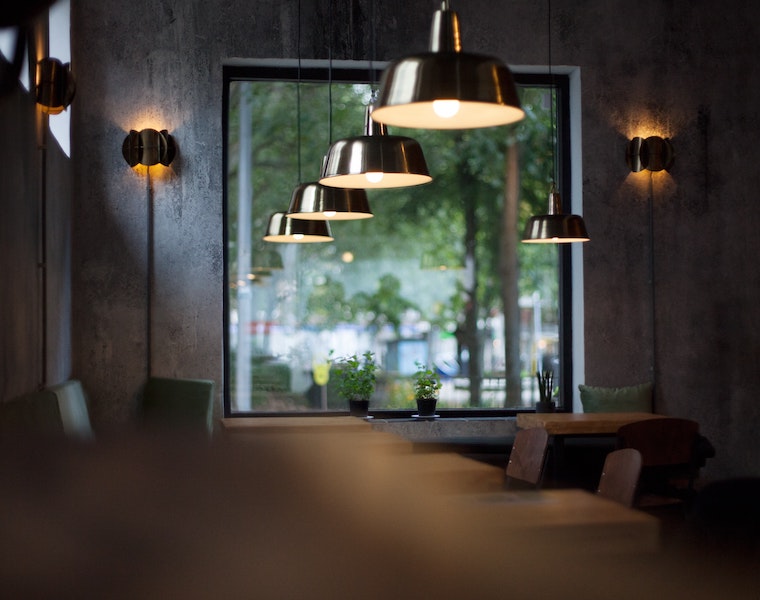We’ve spoken before about the importance of natural light in the workspace and why mood lighting isn’t just for hospitality – both of these topics go to show just how integral lighting is when it comes to the elements of any office refurbishment design scheme.
Here, we turn the spotlight—quite literally—on how various different types of office lighting can impact things like mood, wellbeing and overall productivity of space users.

Gone are the days of clinical strip lighting that offices of the past were lit with. Today, light is used in far more creative and innovative ways to influence the functionality of each space within the office ecosystem.
So, if you’re looking to refresh the lighting in your workspace or just curious to learn more about how to use light as a strategic commercial design tool, keep reading.
Office lights: more than function
In modern interior design, lighting is about far more than simply switching something on for visibility. The lighting you choose to include within a space can be a powerful communicator of things like brand identity, business type and the mindset you want to invoke in people.
The kind of light you choose can dictate how a person feels, acts and performs within the space. This includes everything from the level and temperate of light to the type of bulb or fixture you choose based on aesthetics, which is why lighting isn’t a design decision that should be taken, well, lightly.
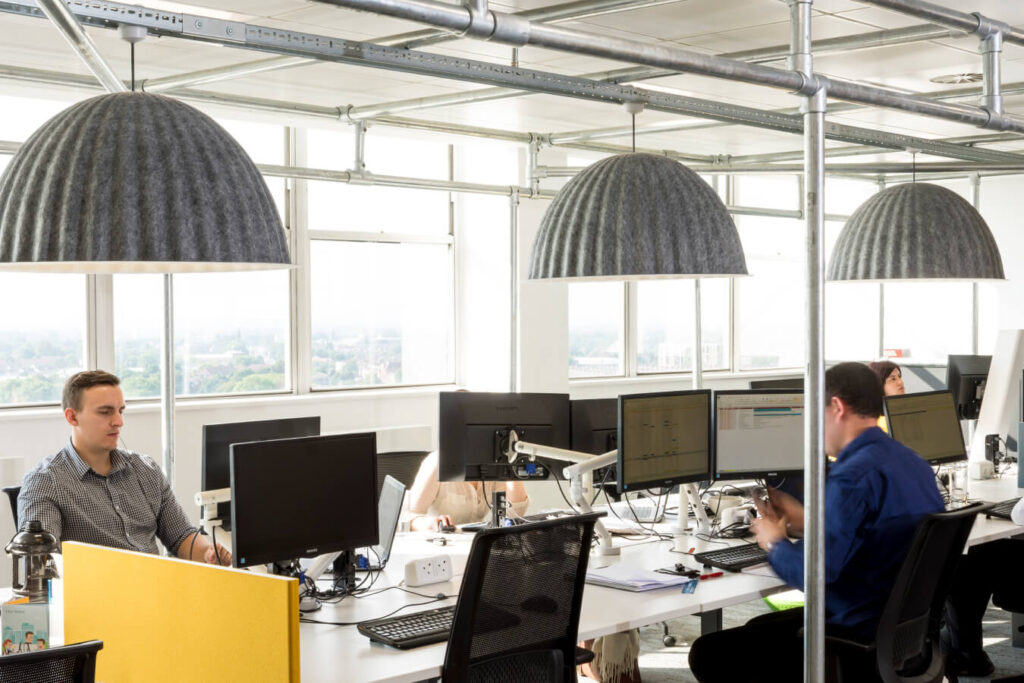
Some light fixtures even have multi-purpose roles such as offering acoustic control, like the ones in the image above.
Setting the mood
Comparison between a boutique hotel bar and a corporate bank headquarters is a great example of how lighting can be applied very differently to achieve a particular effect.
While a boutique hotel bar will often be low-lit with warm, ambient light, a corporate office will typically have brighter, cooler light to encourage alertness.
The bar probably won’t have much natural light, whereas working environments often incorporate as many natural light sources as possible due to the positive effects on employee wellbeing and performance.
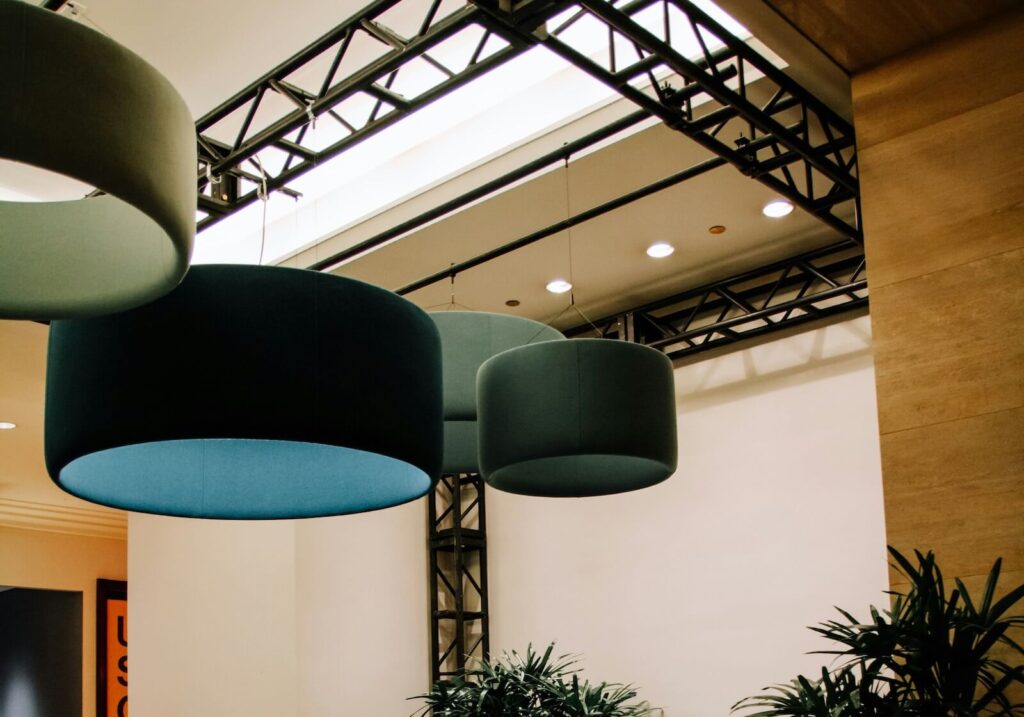
Enhancing productivity
In order for people to perform to the best of their ability, they need to feel energised, awake and focused in a space. So, one of the most significant ways business owners can use lighting as a strategic component is to boost productivity.
Lighting that is too low can make people feel drowsy or pose issues with visibility but lighting that is too bright can lead to things like eye strain and headaches – all of which will hinder performance.
These are all examples of why lighting is such a critical factor in office interior design schemes and fostering engagement and productivity.
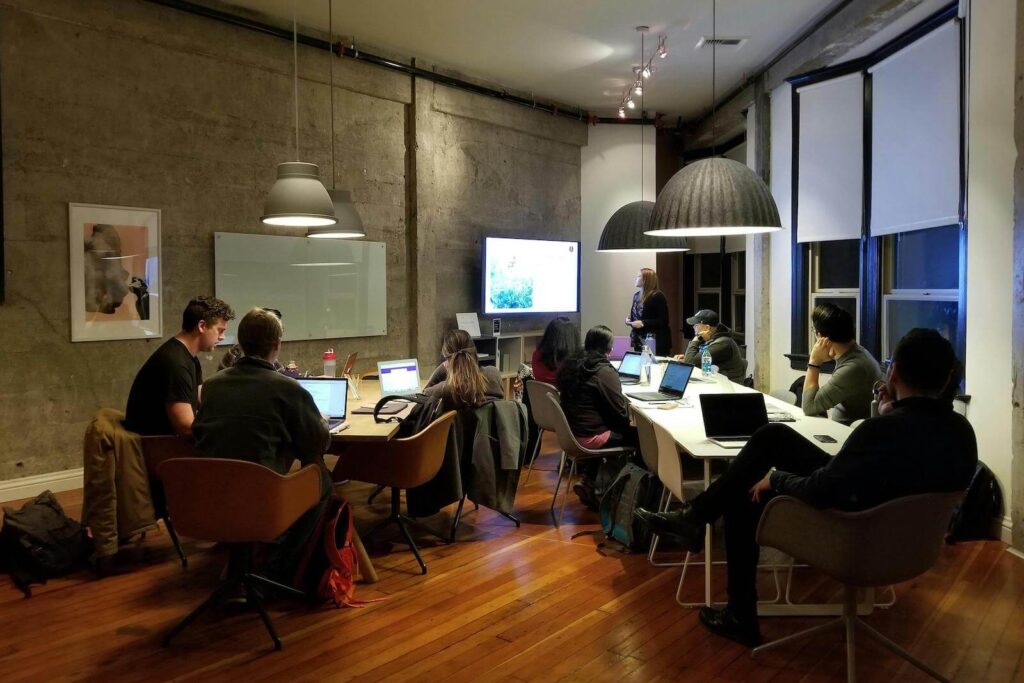
Light colour is another important thing to consider too. We previously explored how colour is a powerful communicator in office design and this applies to lighting as much as it does paints or fabrics.
Flashing lights or too many coloured lights can be extremely distracting in work settings where concentration is key. Save this for receptions or rejuvenation spaces where you want to make a visual statement.
Further on, we also cover why light colour is such an important consideration for wellbeing, particularly for neurodivergent space users.
Nurturing wellbeing
It’s common knowledge that natural light is the best type of light for delivering physical and mental health benefits. However, the use of artificial light is inevitable so it’s essential that you consider the comfort and overall satisfaction of those who use the space.
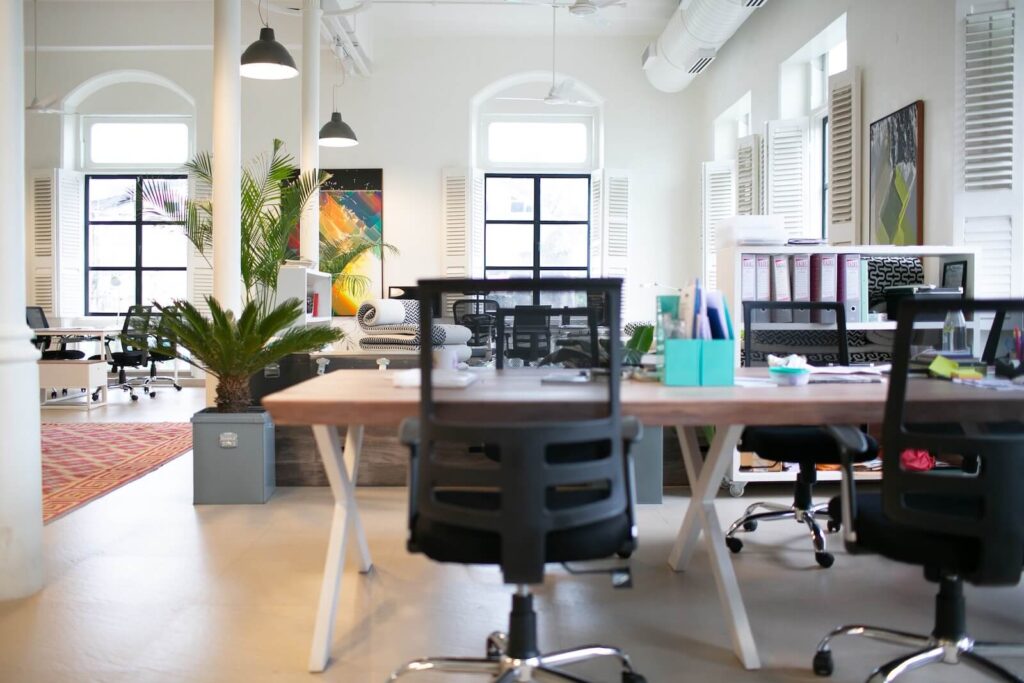
A well-referenced survey carried out by Staples found that a third of office workers would be happier at work if they had better lighting. The same research revealed that 80% of office workers agree that having good lighting in their workspace is important to them.
Some research shows that LED lighting could be more beneficial for mood and health than fluorescent lighting. Fluorescent lighting is more likely to interfere with sleep as it is proven to inhibit the production of melatonin – this, in turn, impacts mood and wellness.
LED lights, on the other hand, don’t inhibit melatonin production and can be dimmed or brightened throughout the day to support the Circadian rhythm.
Also remember to consider the colour of lighting you use and the emotions these shades can evoke. Red, for instance, is a popular colour for statement neon light features but bright red can actually rouse feelings of stress or panic in people.
Yellow or orange lights are preferable for places where relaxation or casual interaction happens, for instance, while cool blue and white lights are recommended for focus spaces and meeting rooms.
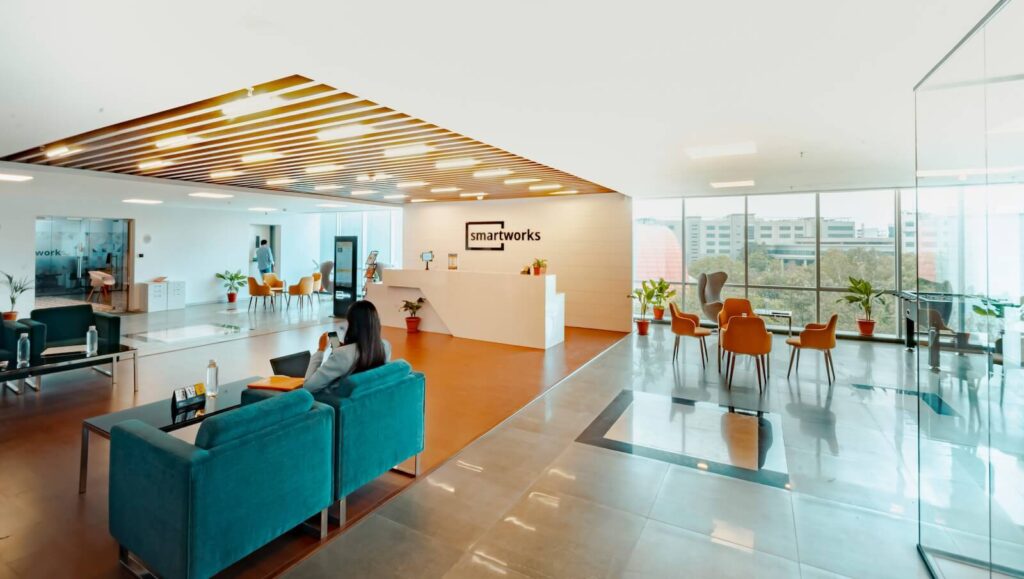
Fine-tuning look and feel
Whether it’s a current trend or a timeless design scheme, the light fixtures you choose can be the making or breaking of the overall finish of your workspace.
Plus, lighting is also one of the most flexible and adaptable ways to switch up the look and feel of your interior without having to make any other drastic changes to furniture or other fit out elements.
Something as micro as swapping the type of bulb or lampshade you use, for instance, can instantly change the theme or vibe of a room. Simply adding a string of festoon lights to an office kitchen, for example, immediately makes the space feel cosier and ‘resimercial’.
Lights in action
Below are three unique workspace transformation projects the Penketh Group team completed in the north west, all of which feature light as a key component of the overall feel, finish and function of the space.
Light colour to reflect brand image
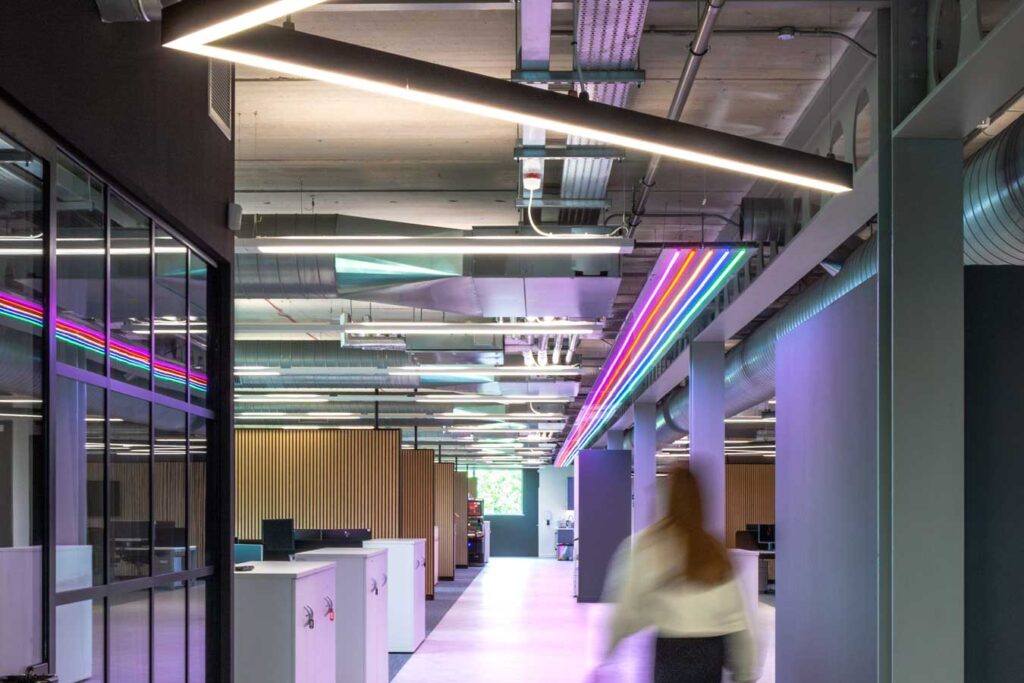
Lighting was used creatively here for a leading gaming software company in Manchester to reflect the brand identity and foster familiarity for those visiting the business. We specified furniture and wall manifestation to enhance this concept.
Industrial lighting to match maritime heritage
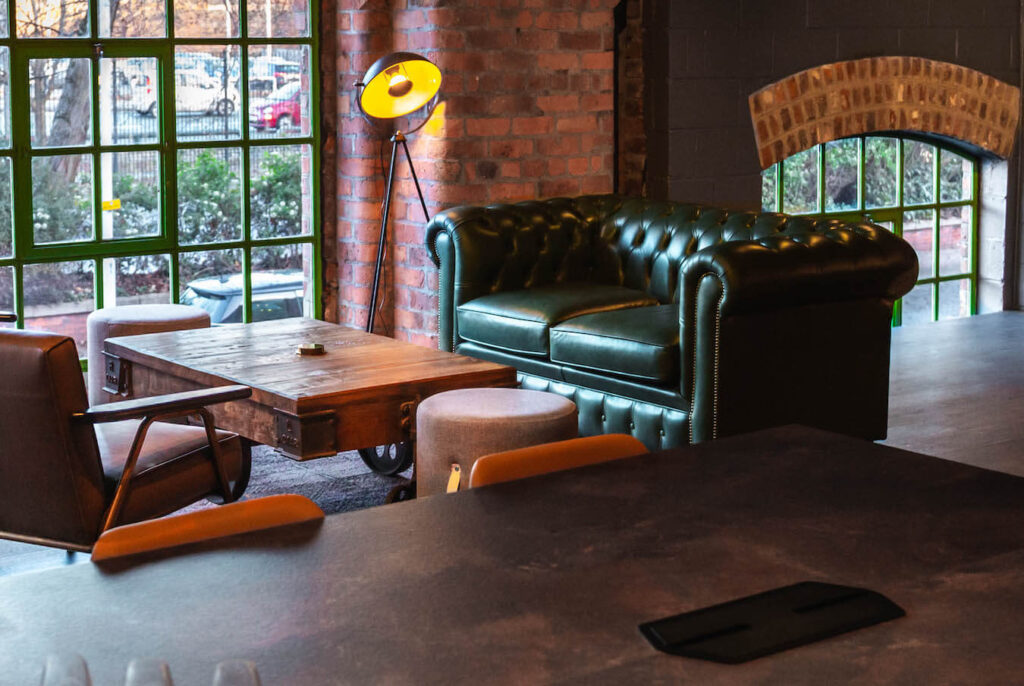
We transformed The Main Rum Company’s on-site entertainment space, inspired by the industrial waterfront history of the building. Part of this transformation included pendant overhead lights with black steel fixtures, hospitality-style back bar lighting and vintage floor lamps with tungsten bulbs for a modern take on tradition.
Soft lighting for an ‘urban oasis’
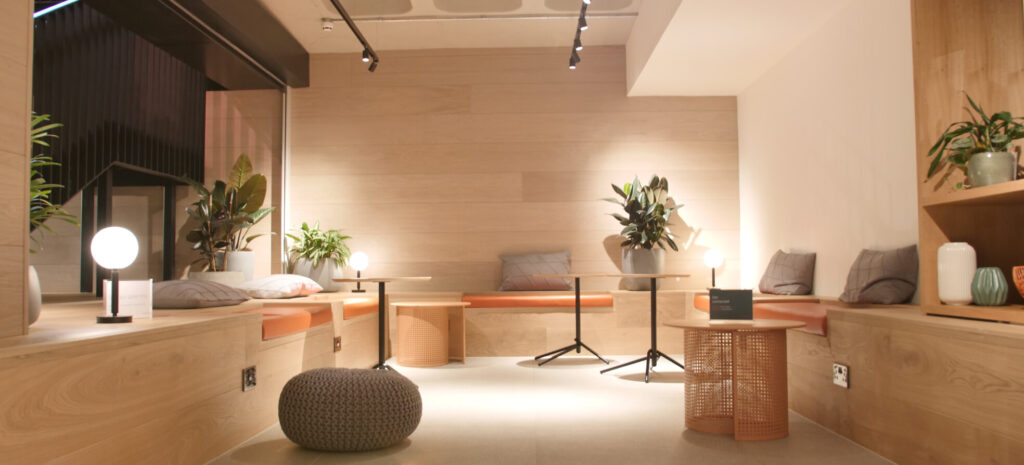
Design considerations for this project were to include: biophilia, wellbeing, amenity, lighting, technology, interactive art, community, and collaboration spaces. Light fixtures were a significant part of fulfilling the brief. The warm, ambient lighting on the lower floor helped create an inviting, tranquil environment to recharge and take part in events like yoga classes and social occasions.
Have you got plans for an office refurbishment of your own? Get in touch to find out more about how our team can help, from furniture consultancy to financing options.
